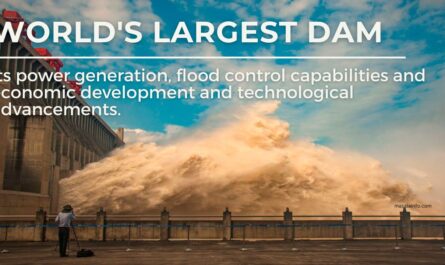In today’s world, if we talk about technology, humans probably have everything available to accomplish almost anything. But even today, when it comes to the Ocean Exploration only about 20% of it has been explored. Scientists from all around the world are working on this but despite having such advanced technology, what is it that has kept humans from exploring more than just 20% of the ocean so far? And we still can’t believe that 80% of the ocean remains unexplored.
Ocean Size:
The ocean covers 75% of the Earth’s surface, with a total area of approximately 361 million square kilometers (139 million square miles). The volume of water in the ocean is about 1.37 trillion cubic kilometers (328.7 million cubic miles), which sounds huge even when heard.
So far, the ocean’s average depth has been measured at 12,000 feet, and the deepest point ever discovered is the Mariana Trench, which is 36,000 feet deep. Scientists believe that the ocean could be even deeper than this.

Challenges While Exploring the Sea:
Scientists have used every technology available to explore the ocean, But failure is still an ongoing company. Many challenges have been faced so far, such as:
-
Extreme Pressure:
The deeper you go, the more the pressure increases, and this makes it 100% likely that high-tech equipment could be crushed due to this pressure. -
Darkness:
Sunlight only reaches up to about 600 feet deep in the ocean, which is why specialized lights and imaging technologies are required to help with navigation. -
Cold Temperatures:
The ocean is very cold, especially at deeper depths. The temperature of the deep ocean ranges between 0 to 3 degrees Celsius, and below 7,000 meters, it can drop to 0 degrees. In such conditions, solid equipment is needed to withstand this cold. -
Saltwater:
Ocean saltwater can damage metal equipment and thus, there aren’t yet any equipment that can last long in this environment for research purposes. -
Visibility:
According to current technology, we can only see or work effectively in the ocean up to about 1,000 meters, and no technology has been developed yet for depths beyond that. -
Lack of Oxygen:
There is a serious lack of oxygen in the deep ocean, so divers and submersible operators need specialized breathing equipment to survive. -
Vastness:
Despite careful planning, as we go deeper, unexpected challenges continue to arise. -
Cost & Safety:
High-tech equipment comes with a very high cost and even then, there is a greater chance of equipment failure during exploration due to unexpected conditions.
Technologies Used So Far:
To explore the ocean, scientists have used technologies like Human-Occupied Vehicles (HOVs), Remotely Operated Vehicles (ROVs), Autonomous Underwater Vehicles (AUVs), Mapping Sonar, Side-scan sonar, Multibeam sonar, Remote Sensing, and Ocean and Climate Data.
Countries across the world have invested trillions of dollars in ocean research, and this investment continues. China, for instance, is planning to build a deep-sea space station by 2030, which will give a significant boost to ocean research.

Why Are Oceans Important to Explore?
Oceans are home to a vast diversity of life, and many species are yet to be discovered. Exploring the deep parts of the ocean will help us identify new marine species that could have medicinal or industrial uses.
Oceans absorb a significant portion of carbon dioxide produced by human activities. Many marine organisms produce compounds that could be useful in medicine, agriculture, and industry.
Understanding tectonic plate activity under the ocean can help scientists forecast and prepare for natural disasters such as earthquakes and tsunamis. Ocean exploration is also essential to national defence, which includes submarine surveillance, monitoring marine activities, and understanding maritime law enforcement.
Ocean exploration advances various scientific fields, such as marine biology, chemistry, physics, and engineering.

Present And Future of Ocean Exploration:
-
Seabed 2030 Project:
The goal of this project is to explore 100% of the ocean floor by 2030. Seabed 2030 is a collaborative project between GEBCO and The Nippon Foundation, and it will focus on mapping the ocean floor using modern sonar methods. -
India’s Deep Ocean Mission (DOM):
India’s Deep Ocean Mission (DOM), also known as Samudrayaan, aims to explore and utilize the depths of the Indian Ocean. India is developing a manned submersible, Matsya-6000, which will be capable of carrying three people to a depth of 6,000 meters.One of its key objectives is to explore and potentially extract polymetallic nodules, which are rich in valuable minerals like manganese, nickel, cobalt, copper, and iron hydroxide.
-
NOAA Ocean Exploration’s “Beyond the Blue” Campaign:
NOAA Ocean Exploration’s “Beyond the Blue” Campaign is an initiative led by the National Oceanic and Atmospheric Administration (NOAA) as part of their Ocean Exploration Program.The “Beyond the Blue” campaign uses advanced technologies such as remotely operated vehicles (ROVs), autonomous underwater vehicles (AUVs), and advanced sonar systems to explore deep-sea regions in detail.
Also Read : A Building with Homes, Offices, and More : Everything You Need Under One Roof
For More Updates Please Join :FaceBook




One thought on “100% of the Ocean Will Be Explored by 2030? Let’s Dive In!”